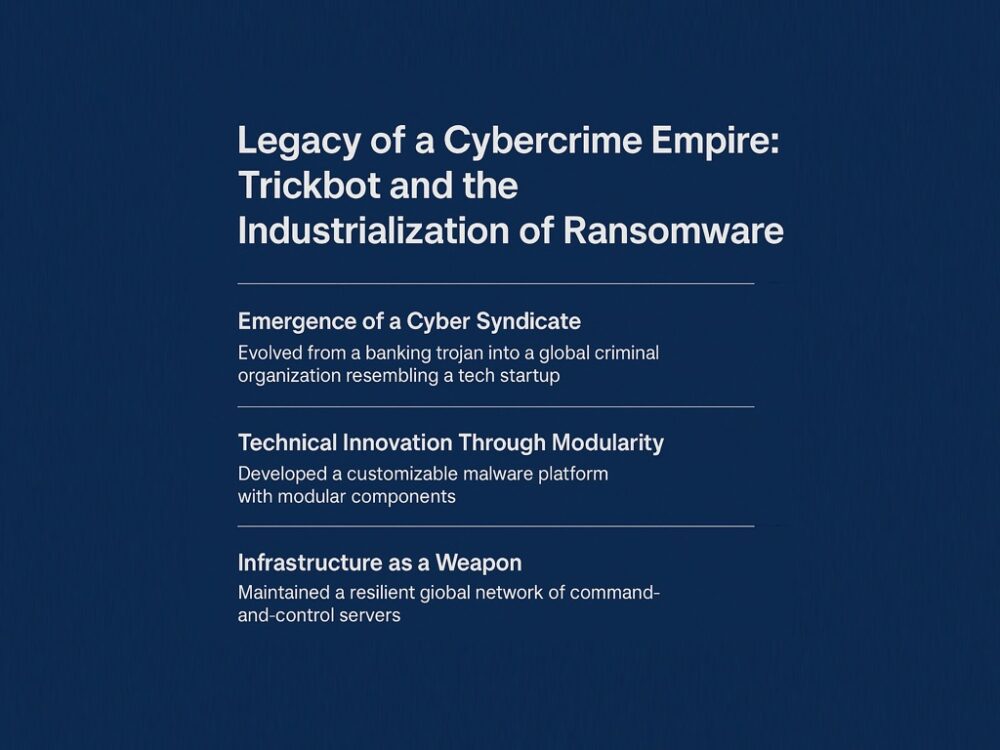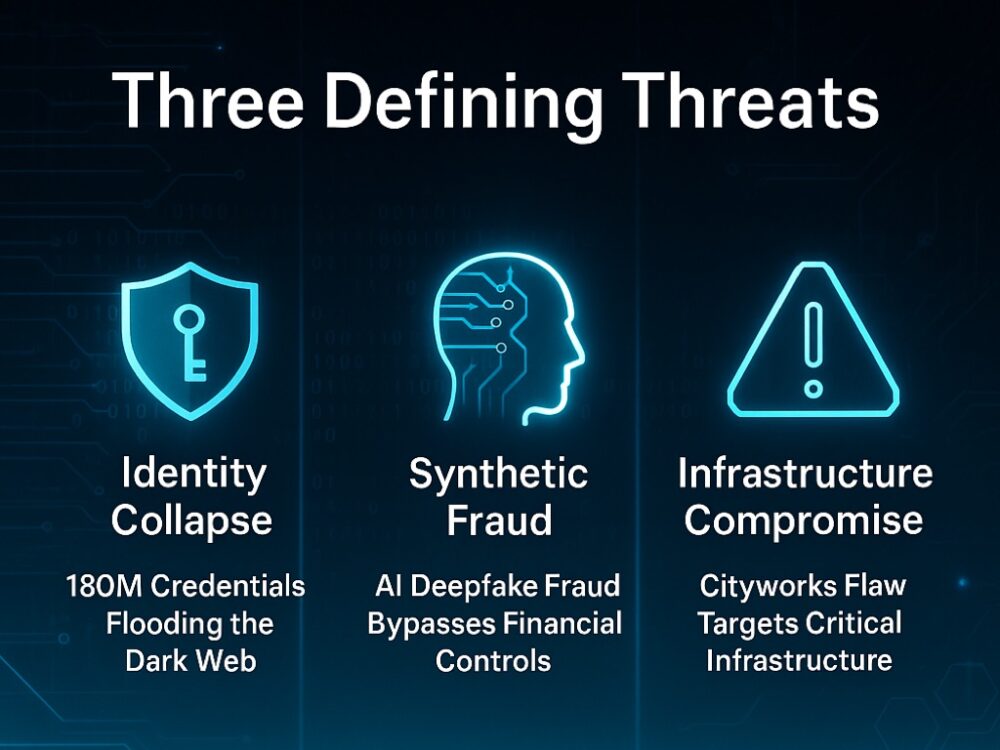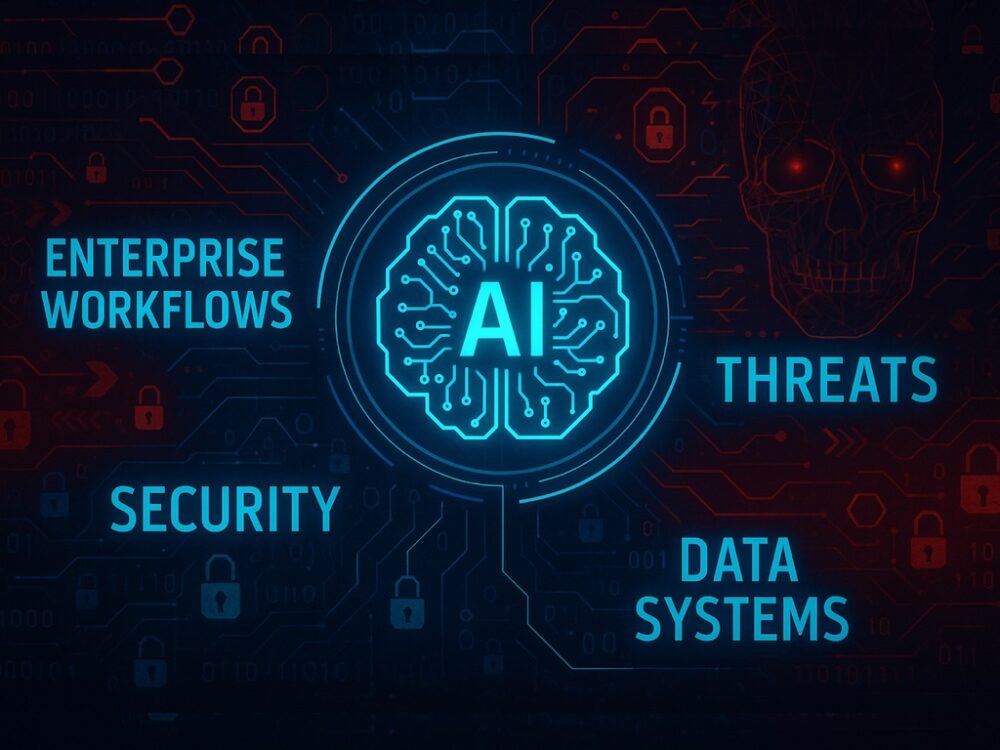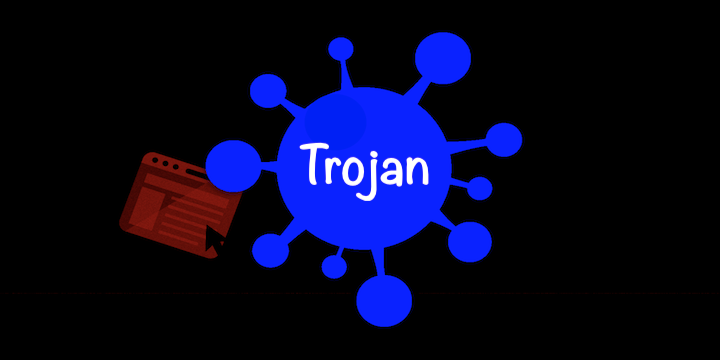The cybercriminal ecosystem of 2025 still bears the fingerprints of one of the most formidable threat actors of the last decade: Trickbot. Though officially dismantled, Trickbot’s methodologies, tools, and organizational model have become foundational to modern ransomware operations. More than a gang, it was an institution—an archetype of what professionalized cybercrime looks like. And its shadow still shapes today’s threat landscape.
The Emergence of a Cyber Syndicate
Trickbot began as a banking trojan in 2016, designed to siphon credentials from financial institutions. But over six years, it evolved into a criminal empire, culminating in the development of its own ransomware arm—Conti. At its peak, Trickbot wasn’t just delivering malware; it was orchestrating industrial-scale campaigns with militarized precision.
This wasn’t a loose hacker collective—it was a fully operational business. Internal leaks from 2022 revealed an organization with HR departments, QA teams, payroll managers, and scheduled vacation requests. Leaders like Maksim Rudenskiy, Maksim Galochkin, and Mikhail Tsarev ran development, testing, and finance, mirroring the structure of a modern tech startup.
“You cannot convince me they weren’t running this exactly like a tech startup,” said Jake Williams, former NSA operator.
Technical Innovation Through Modularity
Trickbot’s defining technical breakthrough was modularity. It developed a malware ecosystem where attacks could be custom-built using Lego-like components. The core loader enabled persistence and beaconing. Payloads were tailored: credential stealers, web injectors, lateral movement tools, and remote access modules—all deployed dynamically based on victim profiles.
This modularity allowed for:
- Fast iteration without re-compiling core binaries.
- Reduced detection footprints through isolated functionality.
- Controlled testing of new capabilities on segmented targets.
“Trickbot built a menu where every attack could be customized. They industrialized cybercrime.” —Sarah Chen, malware analyst
Infrastructure as a Weapon
At its operational zenith, Trickbot maintained 128+ command servers globally. These weren’t just redundant—they were strategically distributed across countries like Brazil, Kyrgyzstan, and Colombia to complicate takedown efforts. Communications were encrypted and often layered with fallback domain generation algorithms.
They also pioneered parasitic infrastructure—co-opting infected victim machines as proxy nodes, effectively turning victims into parts of the attack infrastructure.
Procurement and ops security were equally disciplined. Servers were bought using false identities, cryptocurrencies, and bulletproof hosting arrangements. Failover systems activated within hours of takedowns.
Strategic Alliances and Ransomware-as-a-Service
Trickbot’s most disruptive move wasn’t a tool—but a partnership: its alliance with Emotet, which enabled mass deployment via email spam. Emotet infections became Trickbot entry points. In return, Trickbot paid per successful install.
This ecosystem strategy extended to:
- Ryuk and Conti ransomware operations
- QakBot and IcedID malware exchanges
- Initial Access Brokers and Money Laundering Networks
This cooperative model scaled attacks beyond any single actor’s capacity, laying the groundwork for today’s Ransomware-as-a-Service (RaaS) model.
Tactical Maturity in Ransomware Deployment
By 2020, Trickbot had fully transitioned from fraud to ransomware. It wasn’t smash-and-grab; it was surveillance and siege. Operators infiltrated systems for weeks before deploying encryption. They harvested sensitive data to fuel double extortion schemes, maximizing pressure on victims.
During the COVID-19 pandemic, Trickbot targeted healthcare networks—explicitly because “they pay fastest.” Over 400 healthcare organizations were hit in 2020 alone. The targeting was calculated, heartless, and efficient.
Affiliates handled execution. Trickbot provided tools and infrastructure, taking a cut—70/30 or 80/20 depending on performance.
Operational Immunity and Law Enforcement Hurdles
Operating from Russia provided near-complete immunity. Extradition was impossible. Arrests only occurred when members traveled abroad. The infrastructure was globally distributed; the operators remained untouched.
Even large-scale operations—like Microsoft’s 2020 takedown of over 100 servers—only momentarily disrupted operations. Encrypted C2, fast-changing payloads, and affiliate-based distribution ensured continuity.
The real breach came from within: The Conti Leaks. In 2022, an insider released over 60,000 internal messages, unmasking operators and exposing operational blueprints. It sowed distrust, fractured alliances, and crippled internal morale.
Trickbot’s Demise and Fragmentation
Under increasing pressure, Trickbot formally disbanded in 2022. But its dissolution created not peace, but proliferation. Its members splintered and seeded new operations: Black Basta, Royal, Quantum, Karakurt. Others joined LockBit, Hive, and similar groups.
They carried with them:
- Modular architecture designs
- Professionalized management structures
- Proven RaaS business models
- A ruthless understanding of operational targeting
Trickbot’s DNA became the ransomware standard.
Lessons for Modern Cyber Defense
The legacy of Trickbot offers a strategic playbook for defense in 2025 and beyond:
- Assume Professional Adversaries
These are not hobbyists. Defenders must account for adversaries with structured teams, operational discipline, and multi-stage tactics. - Focus on Behavior, Not Signatures
Modular malware evades static detection. Detect anomalous behavior: lateral movement, privilege escalation, unusual admin tools. - Prepare for Ecosystem Attacks
Modern intrusions involve multiple entities. Monitor for coordinated signals across the attack chain—not just individual indicators. - Build for Resilience, Not Just Prevention
Assume breach. Minimize dwell time. Prioritize rapid isolation and recovery. - Invest in Intelligence Sharing
Collaborating with threat intelligence groups and law enforcement multiplies defense effectiveness. The Conti Leaks proved that insider exposure can be more powerful than external takedowns.
The Aftermath and Ongoing Influence
Vitaly Nikolaevich Kovalev, Trickbot’s alleged leader—known online as Stern—remains at large in Russia. But the real story isn’t one of individual fugitives. It’s the systemic transformation Trickbot triggered.
Today, every modular malware, every affiliate-run ransomware campaign, and every infrastructure-resilient criminal syndicate owes something to Trickbot’s playbook. Their fall was real. But their framework lives on.
Trickbot’s rise teaches how cybercrime scaled.
Trickbot’s fall teaches how even sophisticated operations can collapse.
Trickbot’s legacy teaches what defenders must expect next.
In an era defined by digital risk, Trickbot was both blueprint and warning. What emerges next may wear a different name—but the tactics, the tools, and the ambition will feel very familiar. We’ve seen the prototype. The evolution is already here.





